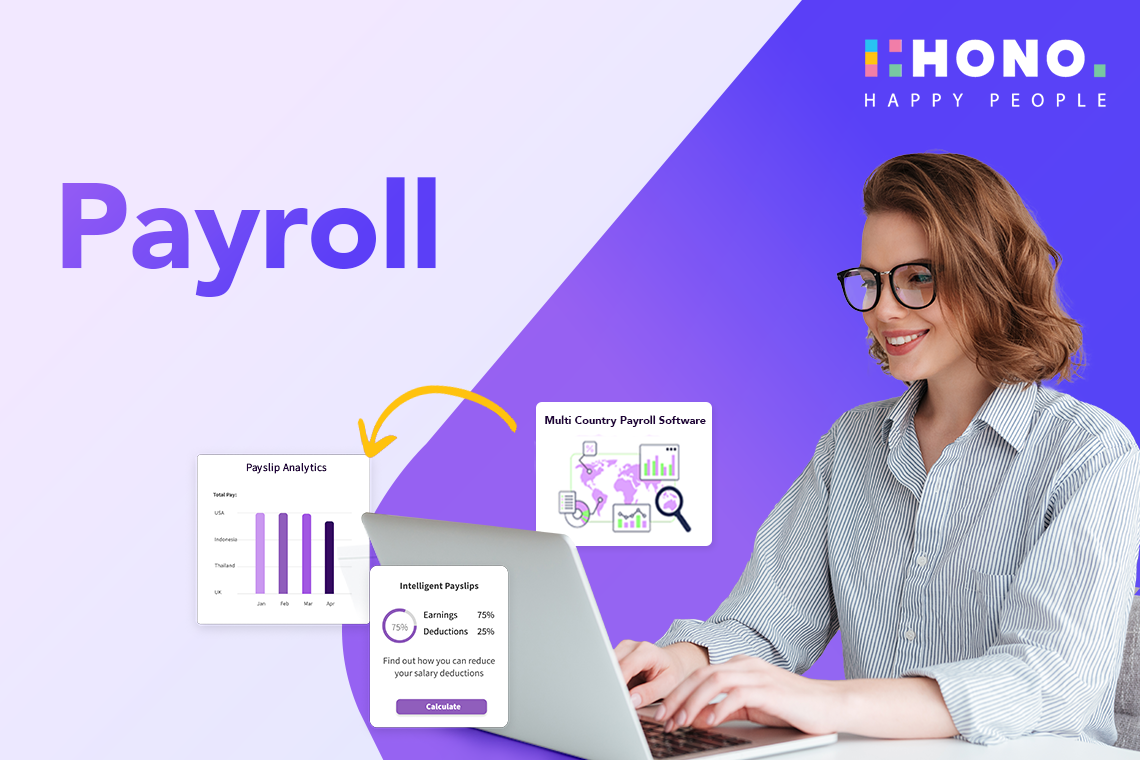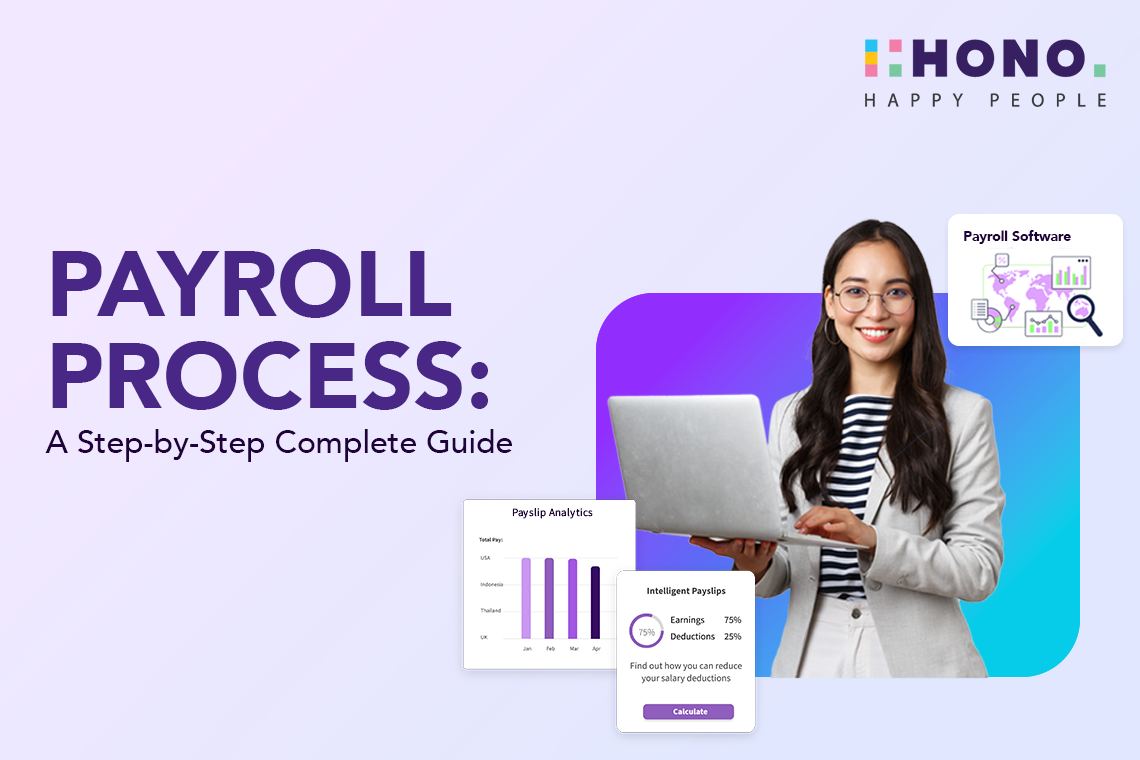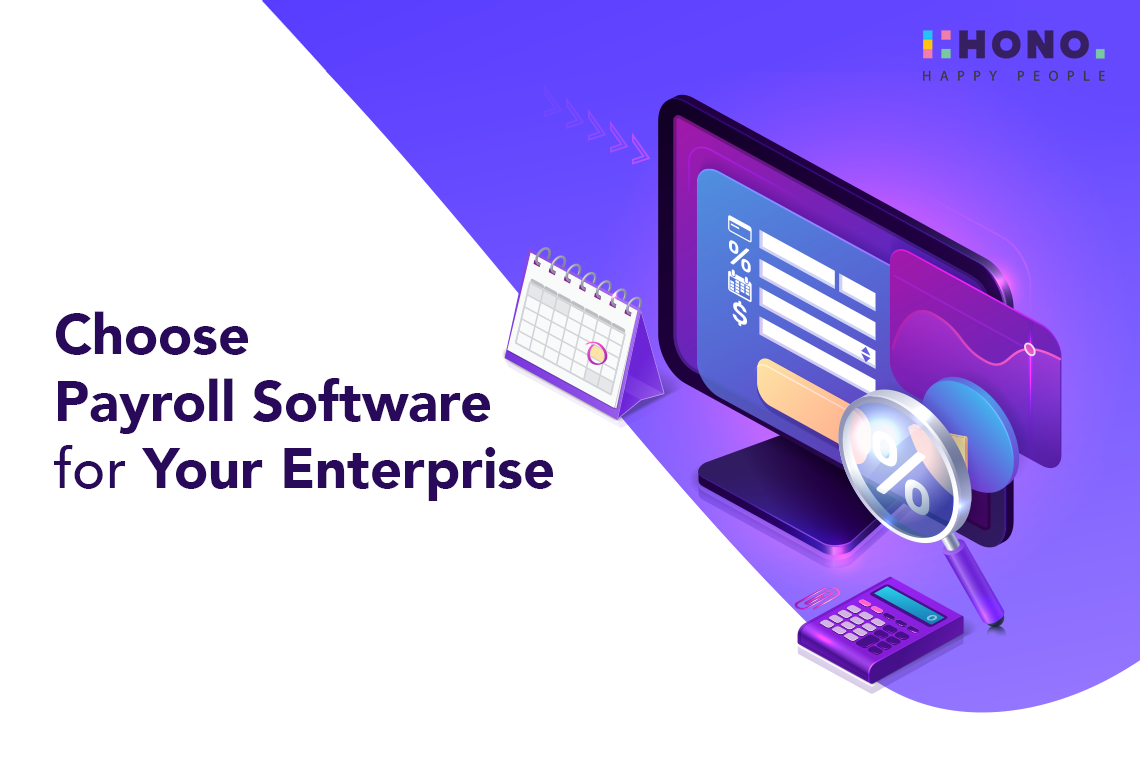- Human Capital Management
How to Implement Attendance and Payroll Software in Your Organization
29 Jul, 2024 |

Efficient management of attendance and payroll is important for organizations of all sizes. Implementing advanced attendance and payroll software is not just a trend; it is a strategic move to streamline your HR operations. It serves as a digital solution that simplifies the complex task of workforce management. It automates and centralizes processes, ensuring accuracy, saving time and reducing the risk of errors. This software has become the backbone of HR departments, enabling them to focus on strategic tasks while the software handles the operational details.
In this blog, we will guide you through the process of implementing attendance and payroll software in your organization. Let us begin by understanding why this software is important and what benefits it brings. We will start by assessing your organization's unique needs and understanding why it is important. Then, we will look into the selection process, helping you choose the right attendance and payroll software. Throughout this blog, we will emphasize the benefits of implementing cloud-based HR and payroll software, how payroll software works and how it can change your HR processes. So, let's get started!
Understanding Your Organization's Unique Requirements
If you are considering setting up attendance and payroll software for your company, know that one size certainly doesn't fit all. To successfully implement this software, it is important to recognize your organization's specific needs. Here's where it all begins.
Every organization has its distinctive characteristics. These translate into unique HR requirements. Are you a small startup or a multinational corporation? Is your industry highly regulated or more flexible? Do you have existing systems in place? These are the initial questions you need to ask.
The key to successful implementation is selecting software that aligns with your organization's needs. You'll need to consider factors like company size, industry-specific requirements and compatibility with your existing systems. This critical step ensures that the software you choose is tailored to your operations, making the entire process more efficient and effective.
Selecting the Right Software
Choosing the right attendance and payroll software is an important decision in the implementation process. It is not just about finding software that works; it is about finding the software that works for your organization. Let's explore how to make this choice wisely.
The process of selecting the right software involves a careful balance of research and evaluation. You will need to get into the world of attendance and payroll software, understand how payroll software works and explore the options available.
To make an informed choice, here are a few criteria you should consider:
Functionality: Ensure that the software has the necessary features for attendance tracking and payroll management. It should be able to handle tasks like time tracking, leave management and payroll calculations.
Cloud-Based HR and Payroll Software: Consider opting for cloud-based software. It offers the flexibility of accessing data from anywhere, simplifying remote work and ensuring your team can manage attendance and payroll effectively.
Scalability: Your organization might grow, and your software needs to grow with you. Pick software that can scale as your business expands. Scalability ensures the software remains relevant as your organization evolves.
Related: Solving HR Challenges: Leave and Attendance Management Solutions
Integration: Check if the software can integrate seamlessly with any existing HR or financial systems you use. This integration is essential to avoid data duplication and streamline your operations.
Evaluating Software Options
When it comes to evaluating software options, it's all about the details. Consider the features you need. Does the software offer scalability to accommodate your organization's growth? And, of course, weigh the cost factor.
But before making any decisions, it's important to explore the different attendance and payroll software options available. Start by conducting online research, reading reviews and seeking recommendations from colleagues or industry peers.
Look for software solutions that offer features related to attendance tracking and payroll management. Take note of their functionalities, pricing and customer reviews to get a better understanding of what each software can offer.
Additionally, consider the software's user-friendliness. You'll want software that's easy for your team to navigate and use without extensive training.
Plan the Implementation
Once you have chosen the right attendance and payroll software, the next step is planning its implementation. This is a critical phase in ensuring the software works effectively for your organization.
Having a detailed plan for implementation is crucial. It should include specific steps and a timeline for when each phase will occur. This plan will serve as a roadmap for your team to follow during the transition.
Key Considerations: Timeline, Budget and Resources
Timeline: Determine a reasonable timeline for the implementation. Ensure it provides enough time for training and troubleshooting, preventing a rushed rollout.
Budget: Understand the costs associated with the software implementation. This includes licensing fees, training expenses and any potential customizations. Staying within budget is essential to avoid unexpected financial strains.
Resources: Identify the resources you need for the implementation. This may include IT support, trainers and project managers. Allocate responsibilities to team members to ensure a smooth process.
By researching and selecting the right software and planning the implementation thoroughly, you set the stage for a successful transition to attendance and payroll software in your organization. This careful approach will help you avoid common pitfalls and ensure your team can make the most of this valuable tool.
Test the System
The testing phase is like making sure your new car runs smoothly before taking it for a long drive. During this phase, your team will thoroughly test the attendance and payroll software to identify and resolve any issues. This includes checking if all features work correctly, and that data is processed accurately.
User testing is a significant part of this phase. Your team, along with potential software users, will put the system to the test. They will use it just like they would in their daily work. Collecting feedback from these users is essential. Their insights can help in fine-tuning the software for better performance.
Go Live
Going live means it's time to start using the new software for real. This phase involves finalizing all the setup, configurations and data migration. Your organization will officially switch from the old ways of managing attendance and payroll to the new, more efficient system.
Clear communication is key during this phase. Ensure that everyone knows when the new system will start, how it will affect their work and where to turn for help if they encounter any issues. Keeping everyone in the loop reduces confusion and keeps things running smoothly.
Monitor and Optimize
Once the system is live, the work isn't over. Ongoing monitoring is crucial to ensure everything continues to run smoothly. Regularly check for any hiccups or glitches and optimize the software to make it even better.
Regular software updates and improvements are like giving your car a tune-up. They keep the system secure and efficient. Make sure your software is always up to date to benefit from the latest features and security enhancements.
Troubleshooting and Support
Sometimes, things don't go as planned. When issues arise, it's essential to have a plan for addressing them. The guide or support team should provide solutions to common problems so that users can get back on track quickly.
Having a dedicated support team is like having a pit crew for your car. They're there to assist users when they encounter challenges. This team ensures that users have someone to turn to for help, making their experience with the software much smoother.
Security and Compliance
Data security is important at all phases. The software should meet the highest standards of data security and compliance. This ensures that sensitive information stays protected and that your organization follows all necessary rules and regulations.
The software itself can play a role in ensuring data security. It might have features that protect data, such as encryption and access controls. Understanding these features and using them effectively can help safeguard your organization's information.
Also Read: A Comprehensive Guide to Global Payroll Processing
To wrap it up, implementing attendance and payroll software involves multiple steps, from research to going live. The process aims to streamline your organization's attendance and payroll management.
Using attendance and payroll software has many advantages, including improved efficiency, reduced errors and better organization. It's a significant step forward for any organization.
Now that you have learned about implementing attendance and payroll software, it's time to act. Explore suitable software solutions with HONO HR that match your organization's needs.
Request a Demo Now!
Frequently Asked Questions
What is the benefit of using attendance and payroll software in my organization?
Attendance and payroll software simplifies the process of tracking employee work hours, managing payroll and ensuring accurate compensation. It reduces errors, increases efficiency and provides valuable insights into your organization's workforce.
How does payroll software work?
Payroll software automates the calculation of employee salaries, tax deductions and other financial aspects. It integrates with your attendance system to accurately determine wages based on hours worked. This software also generates payslips, calculates taxes and can even make direct deposits into employees' bank accounts.
What are the advantages of using cloud-based HR and payroll software?
Cloud-based HR and payroll software offers the convenience of access from anywhere with an internet connection. It eliminates the need for extensive on-site IT infrastructure and allows for easy updates and maintenance. This software also offers scalability and data security, making it a cost-effective and flexible solution.
Is data security a concern with cloud-based HR and payroll software?
Data security is a top priority for cloud-based HR and payroll software providers. They employ encryption, access controls and regular security updates to protect sensitive information. It's essential to choose a reputable provider with a strong track record in data security.
How can I ensure a smooth transition when implementing attendance and payroll software in my organization?
To ensure a smooth transition, it's crucial to have a detailed implementation plan in place. Communicate the changes effectively to your team, provide training if necessary and offer ongoing support. Monitoring and optimization are key to making sure the system works seamlessly and continues to meet your organization's needs.
Table of Content
- Understanding Your Organization's Unique Requirements
- Selecting the Right Software
- To make an informed choice, here are a few criteria you should consider:
- Evaluating Software Options
- Plan the Implementation
- Key Considerations: Timeline, Budget and Resources
- Test the System
- Go Live
- Monitor and Optimize
- Troubleshooting and Support
- Security and Compliance
Our Latest Resources
Frequently Asked Questions
Lorem Ipsum dolore
.png?width=50&height=50&name=Team%20HONO%20logo-01%20(1).png)



